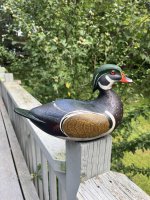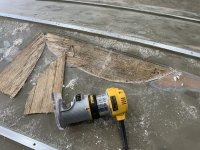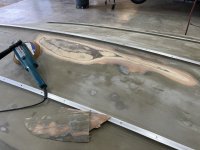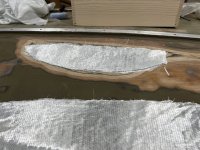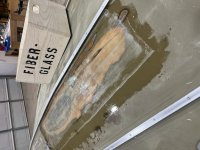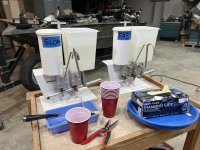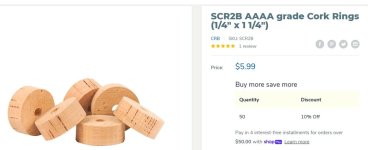I made a one-of-a-kind, custom grip, for a new fishing rod I am building. The raw cork had a too large hole already in it. I reduced the hole size, by cutting a section lengthwise from the center of the stock, gluing the two halves back together. Then rotating 90 degrees and repeating the removal of another center section. You can see how this effectively reduced the hole diameter.

Next step was to produce some .125 slices of Walnut veneer. The stock started out as "waste cutoff" from a log that produced a bowl blank. Strips were cut a bit over thickness on the bandsaw, then thickness planned to finish size, while glued to a sled, which was run thru my thickness planner.
[font=segoe ui, helvetica neue, Helvetica, Roboto, Oxygen, Ubuntu, Cantarell, fira sans, droid sans, sans-serif]
[/font]
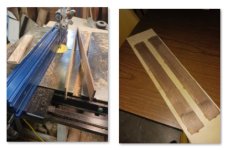
The next operation was to miter cut the cork, glue in the first strip. Rotate 180 degrees, repeat the miter cut and glue in the 2nd strip.
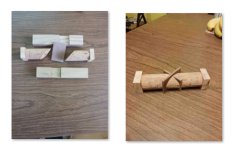
Then everything went to the lathe where the desired outside profile was shaped. The fore grip and the butt grip were also shaped on the lathe.
Finally, the I.D. was reamed on each individual piece to allow it to fit the tapered rod blank, in the location it needed to be fitted.
[font=segoe ui, helvetica neue, Helvetica, Roboto, Oxygen, Ubuntu, Cantarell, fira sans, droid sans, sans-serif]
[/font]
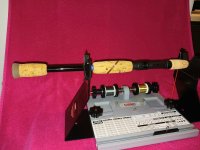
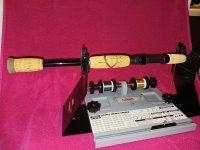

Next step was to produce some .125 slices of Walnut veneer. The stock started out as "waste cutoff" from a log that produced a bowl blank. Strips were cut a bit over thickness on the bandsaw, then thickness planned to finish size, while glued to a sled, which was run thru my thickness planner.
[font=segoe ui, helvetica neue, Helvetica, Roboto, Oxygen, Ubuntu, Cantarell, fira sans, droid sans, sans-serif]
[/font]

The next operation was to miter cut the cork, glue in the first strip. Rotate 180 degrees, repeat the miter cut and glue in the 2nd strip.

Then everything went to the lathe where the desired outside profile was shaped. The fore grip and the butt grip were also shaped on the lathe.
Finally, the I.D. was reamed on each individual piece to allow it to fit the tapered rod blank, in the location it needed to be fitted.
[font=segoe ui, helvetica neue, Helvetica, Roboto, Oxygen, Ubuntu, Cantarell, fira sans, droid sans, sans-serif]
[/font]


Last edited:

